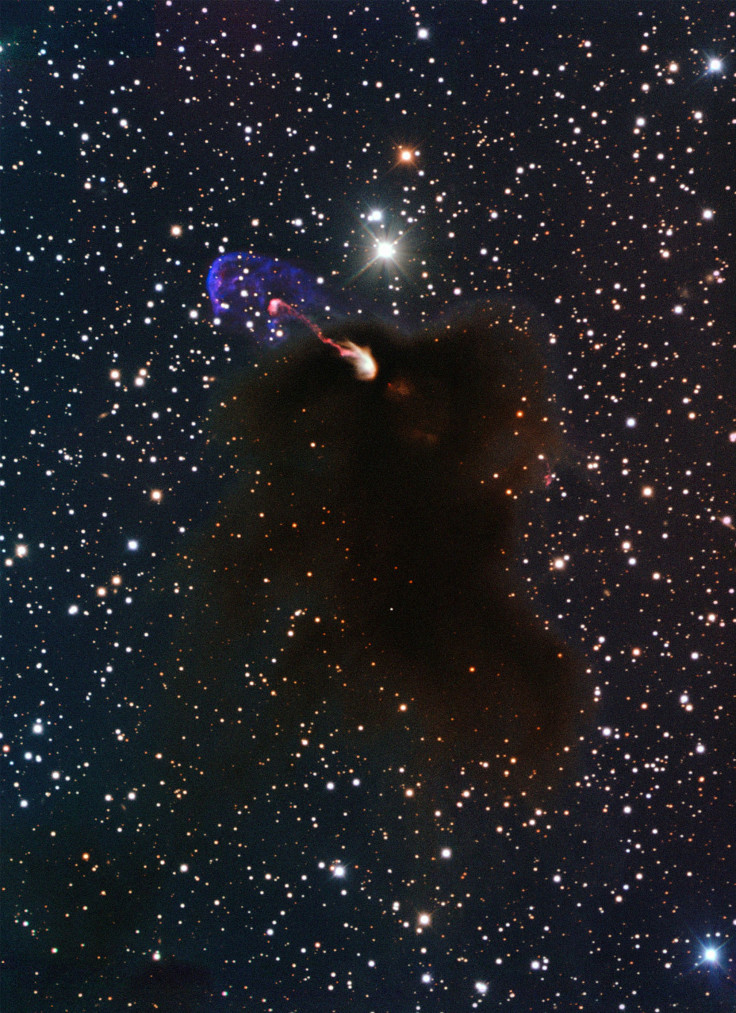Astronomers Capture The Violent Process That Is Star Birth In Stunning New Photo
We tend to think of stars as gentle beacons, but the birth of a star is actually a very violent process, and a new photo vividly captures the drama.

The birth of a new star in the constellation Vela, approximately 1,400 light-years from Earth, was captured using the European Southern Observatory’s Atacama Large Millimeter/submillimeter Array (ALMA), located in Chile. The young star ejects material outward into space at an incredibly fast speed, estimated as high as 1 million kilometers (621,327 miles) per hour, colliding with surrounding dust and debris to create Herbig-Haro objects. ALMA was able to capture Herbig-Haro 46/47 and another stream of material ejected from the star in the opposite direction.
Astronomers George Herbig and Guillermo Haro discovered objects at the site of a new star and determined them a new celestial class, whereas it was previously believed the objects were just clouds of dust and gas illuminated by the young star. Herbig and Haro found that the objects were in fact created by the collision of material ejected by the young star with the surrounding dust and gas.
The image captured by ALMA reveals two different jets of material, one moving away from Earth and the other toward Earth. The astronomers were able to observe the glow from carbon monoxide molecules within Herbig-Haro 46/41 and discovered the ejected material was traveling much faster than previously observed material from other objects.

The researchers will continue to observe the new star and Herbig-Haro 46/47 and are optimistic ALMA will reveal several more surprises regarding star formation. Diego Mardones of the University of Chile, who co-authored a study of the new stars, said in a statement, “This system is similar to most isolated low-mass stars during their formation and birth. But it is also unusual because the outflow impacts the cloud directly on one side of the young star and escapes out of the cloud on the other. This makes it an excellent system for studying the impact of the stellar winds on the parent cloud from which the young star is formed.” The observations of Herbig-Haro 46/47 were published in the Astrophysical Journal.
© Copyright IBTimes 2024. All rights reserved.






















